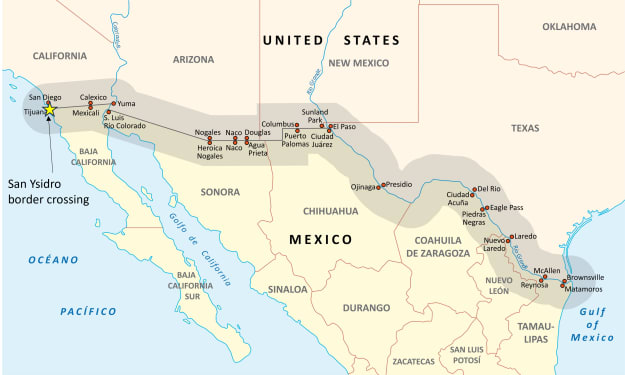Unveiling Time
A New Model for Understanding the Fourth Dimension

In this article, it's time to unravel the mysteries surrounding time itself.
Also, by the end of this narrative, we'll have a potential explanation for phenomena like time dilation and spatial warping; factors governing the nature of time.
Let's start by challenging the way we perceive time and consider a foundational idea: time is another dimension.
Before you dismiss this as science fiction, let's clarify the concept of dimensions.
We're accustomed to three-dimensional space—height, width, and depth. To add a fourth dimension, we must understand the relationships between these three dimensions before introducing time.
Our discussion begins with the basics of three-dimensional space. Objects, like us, move in three perpendicular directions—left/right, up/down, and forwards/backwards.
Now, let's imagine two-dimensional space, where movement occurs in a plane defined by two directions. Likewise, one-dimensional space restricts movement to a single direction.
To move from one dimension to another, we add or remove a dimension at a 90-degree angle from existing dimensions.
While visualizing 4D space introduces challenges, it's essential to acknowledge the connection between space and time.
Einstein's theory of relativity unifies space and time into a single entity—space-time.
In this context, time becomes another dimension, interconnected with space. Just as there's no fundamental difference between height (Z), width (X or Y), there's no distinction between time and space in this unified model.
Intriguingly, we're already moving along the fourth dimension—time.
Our expose continues by exploring a unique model that envisions our existence in a compressed two-dimensional plane, where space (X, Y) coexists with time (Z).
As our 2D selves move upwards, representing the passage of time, we explore the relationship between speed in space and its impact on the rate of time.
Einstein's relativity explains that faster travel through space results in slower movement through time.
By examining vectors and the orientation of our 2D person's motion, we uncover how altering the direction affects their experience of time.
Therefore, moving at the speed of light in space would distort our perception of time, leading to fascinating phenomena like time dilation.
Time dilation is a phenomenon predicted by Einstein's theory of relativity, and it refers to the fact that time can pass at different rates for observers in relative motion. The key points are:
Relative Motion: Time dilation occurs when objects are in motion relative to each other, particularly at speeds close to the speed of light.
Special Relativity: In special relativity, time dilation is described by the Lorentz transformation equation. When an object is moving at high speeds, time appears to pass more slowly for that object compared to a stationary observer.
Consequences: Clocks on fast-moving objects appear to tick more slowly from the perspective of a stationary observer. This leads to effects such as the twin paradox, where a traveling twin ages more slowly than the twin who remains at rest.
Experimental Confirmation: Time dilation has been experimentally confirmed in particle accelerators and with high-speed particles like muons, providing practical evidence for the theory.
General Relativity: Time dilation is also influenced by gravity. Clocks in strong gravitational fields run more slowly than clocks in weaker fields, as described by general relativity.
In essence, time dilation challenges our traditional understanding of time as an absolute and universal concept.
It reveals that time is relative and can vary depending on the motion and gravitational conditions of observers.
This concept has practical applications in technologies like GPS and has been experimentally validated in various scenarios.
Spatial warping, on the other hand, involves the bending of space itself due to the presence of mass, affecting the paths of light and objects.
And by its very definition is a phenomenon where the presence of mass (gravity) causes the bending or warping of space itself, affecting the path that light or objects traveling through space take.
Cause: It is a consequence of Einstein's theory of general relativity, which describes how mass and energy influence the curvature of spacetime.
Consequences: Massive objects, like stars or black holes, can bend the trajectory of light, leading to the observed distortion of distant objects' positions in the sky.
Practical Application: Gravitational lensing has been used to study distant galaxies, uncover dark matter, and confirm Einstein's predictions, demonstrating how gravity affects the fabric of space.
As we conclude this discussion into the fourth dimension, it prompts us to reconsider the nature of time, raising questions about its force, our shape in time, and the possibility of moving against its flow.
Moreover, the idea that time is another confluence of dimension challenges our perception of reality and invites us to explore the unseen world that shapes our universe.





Comments
There are no comments for this story
Be the first to respond and start the conversation.